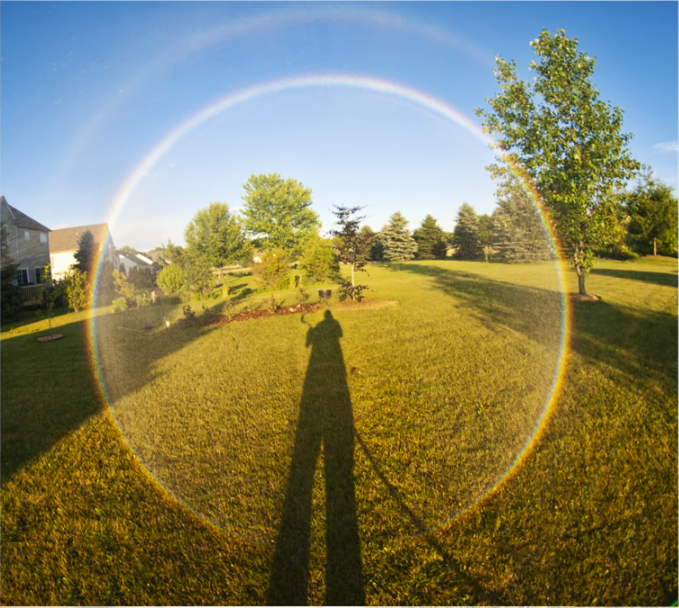OPOD - 360° Rainbow
OPOD - 360° Rainbow: Exploring the Phenomenon
Rainbows have always fascinated us with their vibrant colors and ethereal beauty. Most of us are familiar with the traditional arc-shaped rainbow that forms when sunlight interacts with raindrops in the atmosphere. However, there is another type of rainbow that is much rarer and even more awe-inspiring - the 360° rainbow. In this article, we will delve into the intriguing world of the 360° rainbow and uncover the science behind its formation.
What is a 360° Rainbow?
A 360° rainbow, as the name suggests, forms a complete circle in the sky. Unlike the traditional rainbow that appears as an arc, the 360° rainbow encircles the observer, providing a breathtaking view from every angle. This phenomenon occurs when sunlight interacts with water droplets in the atmosphere at specific angles and conditions.
The Role of Sunlight and Water Droplets
To understand how a 360° rainbow forms, we need to examine the interaction between sunlight and water droplets. When sunlight passes through these droplets, it undergoes a process called refraction, where the light bends and separates into its constituent colors. This dispersion of light creates the beautiful spectrum of colors that we see in a rainbow.
The Cone of Refracted Light
In the case of a 360° rainbow, the colored rim of the primary bow is produced by raindrops near the surface of a cone extending from the observer's eye towards the antisolar point. This cone has a half angle of approximately 42°. Drops near the surface of this cone refract light towards the observer's eye, contributing to the outer red rim of the rainbow. While drops slightly deeper in the cone refract bright blue light to the eye, creating a blue inner edge.
The Inner Disk and Incomplete Rainbows
Deeper within the cone, drops produce a white inner disk. The formation of this white inner disk is rather complex and involves multiple factors, including the size and shape of the water droplets. However, the exact mechanisms behind this phenomenon are still a subject of scientific investigation.
It is important to note that 360° rainbows are exceptionally rare in nature. This is primarily due to the scarcity of raindrops between the observer's eye and the ground, which are necessary to create the lower portion of the rainbow. Without a sufficient number of raindrops at these specific angles, a complete 360° rainbow cannot form.
The Role of Intense Hosepipe Spray
While natural 360° rainbows are elusive, it is possible to recreate this phenomenon under certain conditions. One such condition is an intense hosepipe spray, which provides enough water droplets between the observer and the ground. Although the drops making up the rainbow are physically close, the rainbow itself still appears as if it is located at an infinite distance away, just like any other rainbow.
The Fascinating Rainbow Cone
The cone of refracted light responsible for generating rainbow colors is known as the "Rainbow Cone." It is within this cone that drops near its surface interact with sunlight to produce the vibrant hues we associate with rainbows. Understanding the properties and behavior of this cone is crucial in unraveling the intricate details of rainbow formation.
In conclusion, the 360° rainbow is a mesmerizing natural phenomenon that captivates our imagination. While rare in nature, its occurrence can be recreated under specific circumstances. By exploring the science behind its formation, we gain a deeper appreciation for the interplay between sunlight, water droplets, and our perception of color. The study of atmospheric optics continues to shed light on these enchanting phenomena, reminding us of the wonders that exist right above our heads.

360° Rainbow ~ Adam Kraft created the bow with a low sun and a garden hose. There is part of a secondary rainbow visible. Both bows are centred at the antisolar point, the location of his camera's shadow. ©Adam Kraft, shown with permission.

The coloured rim of the primary bow is produced by raindrops near the surface of a cone extending from the eye towards the antisolar point. The cone half angle is ~42°.
Drops near the surface refract light towards the eye. At right, a drop is refracting red light to contribute to the bow’s outer red rim. It also refracts blue and other colours but these miss the eye. Drops slightly deeper in the cone refract bright blue to the eye and fainter hues of all longer wavelength colours – the eye sees a blue inner edge.
Drops even deeper in the cone produce a white inner disk for rather complicated reasons.
We almost never see a complete 360° natural rainbow because there are not enough raindrops between the eye and the ground to produce the lower part.
An intense hosepipe spray provides enough drops between the eye and ground. The drops making the bow are close - but the rainbow itself still appears like any other rainbow - an infinite distance away.
The "Rainbow Cone". Drops near its surface generate rainbow colours.
The coloured rim of the primary bow is produced by
Note: this article has been automatically converted from the old site and may not appear as intended. You can find the original article here.
Reference Atmospheric Optics
If you use any of the definitions, information, or data presented on Atmospheric Optics, please copy the link or reference below to properly credit us as the reference source. Thank you!
-
<a href="https://atoptics.co.uk/blog/opod-360-rainbow/">OPOD - 360° Rainbow</a>
-
"OPOD - 360° Rainbow". Atmospheric Optics. Accessed on December 24, 2024. https://atoptics.co.uk/blog/opod-360-rainbow/.
-
"OPOD - 360° Rainbow". Atmospheric Optics, https://atoptics.co.uk/blog/opod-360-rainbow/. Accessed 24 December, 2024
-
OPOD - 360° Rainbow. Atmospheric Optics. Retrieved from https://atoptics.co.uk/blog/opod-360-rainbow/.